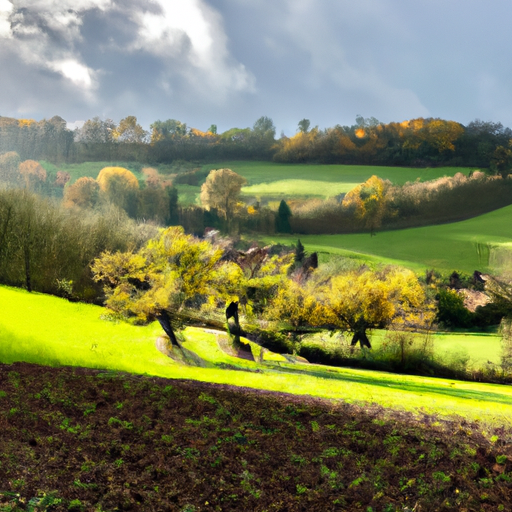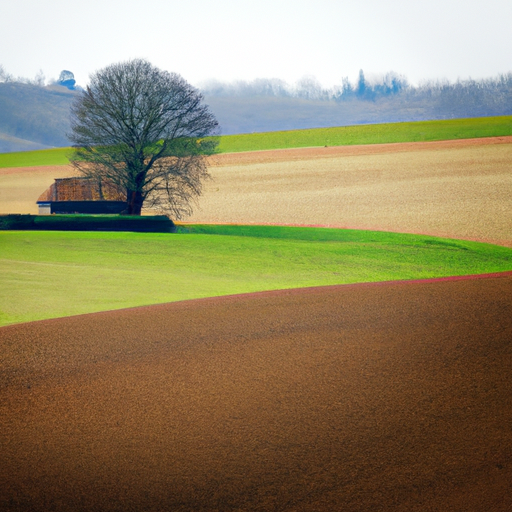The Cotswolds Way is a picturesque walking trail spanning 102 miles that showcases the breathtaking beauty of the Cotswolds region in England. As you embark on this enchanting journey, you will be surrounded by rolling hills, charming villages, and stunning countryside landscapes. Whether you are a nature enthusiast, history buff, or simply seeking a peaceful escape, the Cotswolds Way offers a unique and unforgettable experience that allows you to immerse yourself in the rich culture and natural wonders of this idyllic area. Lace up your walking shoes and get ready to explore the Cotswolds Way – a true gem waiting to be discovered! The Cotswolds Way is a long-distance walking trail located in England. It stretches for approximately 102 miles (164 kilometers) through the stunning Cotswolds countryside. This scenic route takes you through picturesque villages, rolling hills, and ancient woodland, offering a unique opportunity to immerse yourself in the natural beauty and rich history of this enchanting region.
Overview of the Cotswolds Way
The Cotswolds Way is a designated National Trail, recognized for its outstanding natural beauty and historical significance. It was established in 1970 and has since become a popular destination for outdoor enthusiasts and history buffs alike. The trail takes you on a journey through time, showcasing the region’s cultural heritage and stunning landscapes.
History of the Cotswolds Way
Originating in prehistoric times, the Cotswolds Way has a rich and fascinating history. The area was once inhabited by ancient tribes and later influenced by the Romans during their occupation of Britain. The trail also passes through areas associated with the wool trade, which played a significant role in the economy and development of the Cotswolds. Over the centuries, the region has witnessed the rise and fall of kings, the construction of beautiful manor houses and churches, and the evolution of the local communities.

Significance of the Cotswolds Way
The Cotswolds Way holds immense cultural and historical importance. It provides a glimpse into the past, allowing visitors to explore centuries-old settlements, historic landmarks, and hidden archaeological sites. The trail also showcases the region’s unique architecture, characterized by honey-colored limestone buildings and traditional thatched cottages. Moreover, the Cotswolds Way has become a popular recreational and touristic destination, attracting visitors from all over the world. The trail not only offers breathtaking views but also supports the local economy and promotes the conservation and preservation of the area.
Location and Route
The Cotswolds Way is located in south-central England, running through six counties: Gloucestershire, Oxfordshire, Herefordshire, Worcestershire, Wiltshire, and Warwickshire. It passes through several charming towns and villages, including Chipping Campden, Winchcombe, Painswick, and Bath. The trail starts in the idyllic market town of Chipping Campden and finishes in the historic city of Bath, a UNESCO World Heritage Site renowned for its Roman baths and Georgian architecture.

Length of the Cotswolds Way
The Cotswolds Way covers a total distance of approximately 102 miles (164 kilometers). Most walkers complete the route in about 7 to 10 days, depending on their pace and fitness level. However, it is important to note that the trail can be customized to suit individual preferences, with various starting and ending points along the way. It is recommended to plan your route in advance and divide it into manageable stages to fully enjoy the experience.
Terrain and Difficulty Level
The Cotswolds Way traverses a diverse range of terrains, offering a mix of challenging sections and more gentle paths. The trail takes you through undulating hills, open fields, and ancient woodlands. While some areas may involve steep ascents and descents, the overall difficulty level is considered moderate, making it accessible to a wide range of walkers. However, it is advisable to be prepared for variable weather conditions and to wear suitable footwear.

Points of Interest on the Cotswolds Way
The Cotswolds Way is teeming with points of interest that showcase the region’s rich history and captivating natural beauty. Along the trail, you will encounter historical landmarks such as the medieval Sudeley Castle, the Roman villa at Newark Park, and the Neolithic burial chamber at Belas Knap. Architectural gems include the stunning Broadway Tower, an iconic folly with panoramic views, and the picturesque villages of Stanton and Snowshill. You will also have the opportunity to discover natural attractions, including the breathtaking limestone escarpment at Cleeve Hill and the tranquil beech woods of Cranham. Quaint villages and market towns dotted along the route offer charming pubs, tearooms, and local shops where you can rest and refuel.
Wildlife and Nature on the Cotswolds Way
The Cotswolds Way is a haven for wildlife and nature enthusiasts. The trail takes you through areas of outstanding biodiversity, with a wide variety of habitats and protected areas. The Cotswolds Area of Outstanding Natural Beauty is home to rare orchids, wildflowers, and ancient woodland, providing a haven for a diverse range of flora and fauna. Birdwatchers will delight in the opportunity to spot numerous species, including red kites, buzzards, and skylarks. Wildlife encounters may include sightings of deer, hares, and even elusive foxes. The Cotswolds Way allows you to immerse yourself in the natural wonders of this unique region.

Accommodation on the Cotswolds Way
The Cotswolds Way offers a range of accommodation options to suit every preference and budget. Along the route, you will find cozy bed and breakfasts, charming country inns, and comfortable hotels. Many establishments cater specifically to hikers, providing facilities such as drying rooms and packed lunches. Camping is also permitted in designated areas for those seeking a more adventurous experience. It is advisable to book accommodation in advance, especially during peak seasons, to ensure availability and to plan your daily distances accordingly.
Planning and Preparation for the Cotswolds Way
Before embarking on the Cotswolds Way, it is essential to plan and prepare for your journey. Recommended guidebooks and maps will help you navigate the trail and discover hidden gems along the way. It is important to consider weather conditions and pack appropriate clothing, including waterproofs and sturdy footwear. Carrying a backpack with essentials such as food, water, a first aid kit, and a mobile phone is crucial for a safe and enjoyable experience. Familiarize yourself with safety tips, including inform

